The animal kingdom provides so much diversity that it’s almost impossible to keep track of all the different species in the world. Sometimes the distinction between close relatives is too hard to even notice. But different species often evolve in similar ways because of their environment.
We at Bright Side gathered 16 pairs of animals who are almost indistinguishable from each other at first sight in order to show you the differences between them.
1. Jaguar vs leopard
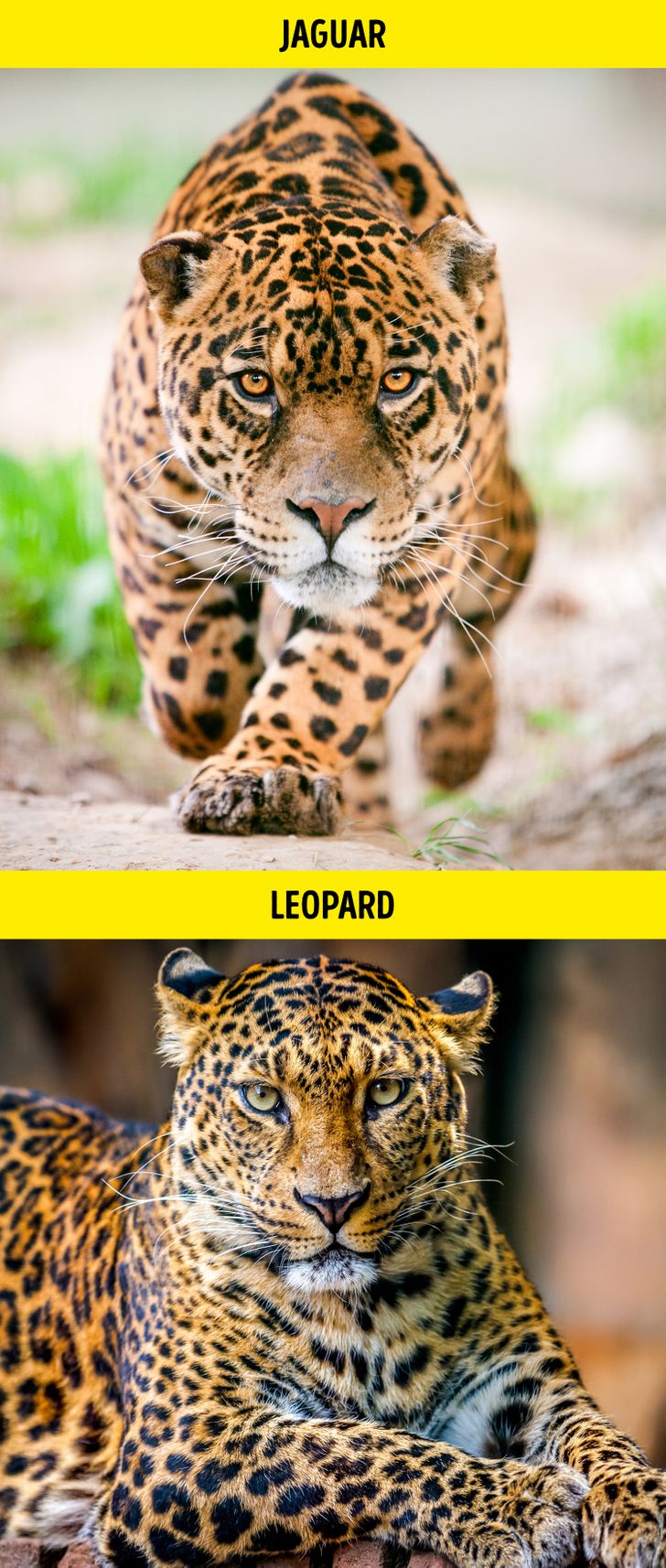
Despite their similarities, these big cats inhabit different continents and climate zones: leopards live in African savannas, while jaguars dwell in South American tropical forests. Jaguars are also larger and bulkier, and unlike leopards and many other cats, they’re fond of water.
2. Alligator vs crocodile
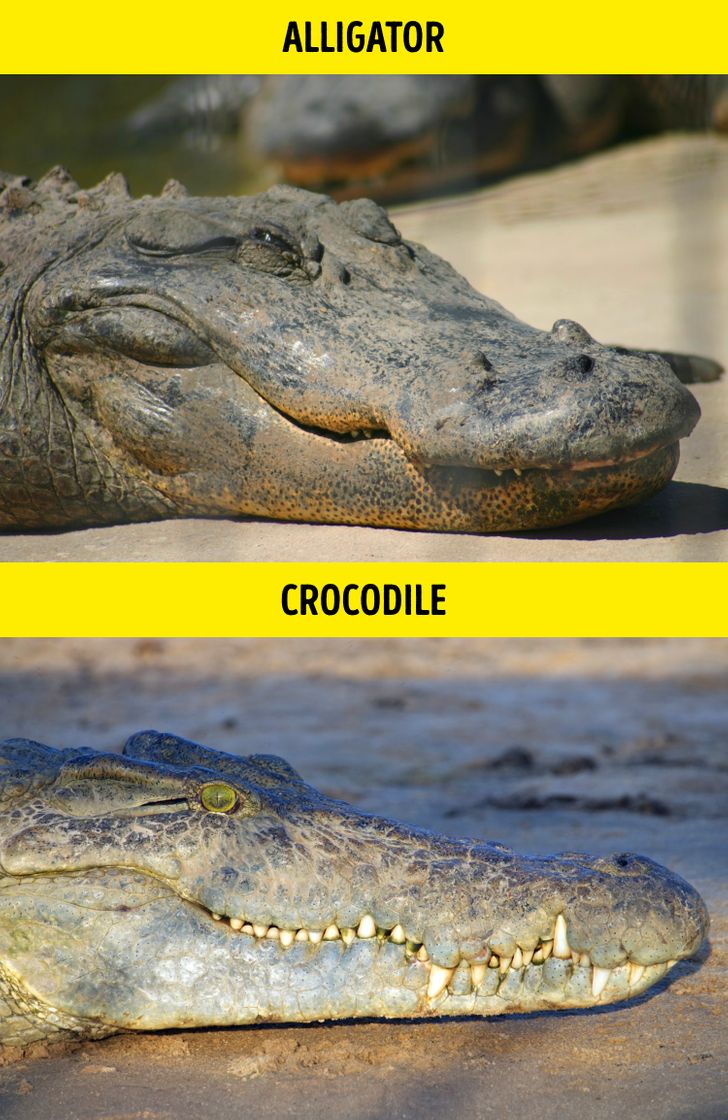
You can easily identify these 2 by the shape of their snouts: crocodiles have prominent, elongated V-shaped faces while alligators have shorter, wider U-shaped ones. Also, consider the teeth: crocodiles display their trademark toothy “grin” with every fourth tooth visible. Conversely, the alligator’s upper jaw is broader than the lower one, so its teeth aren’t visible for the most part.
3. Wasp vs hornet
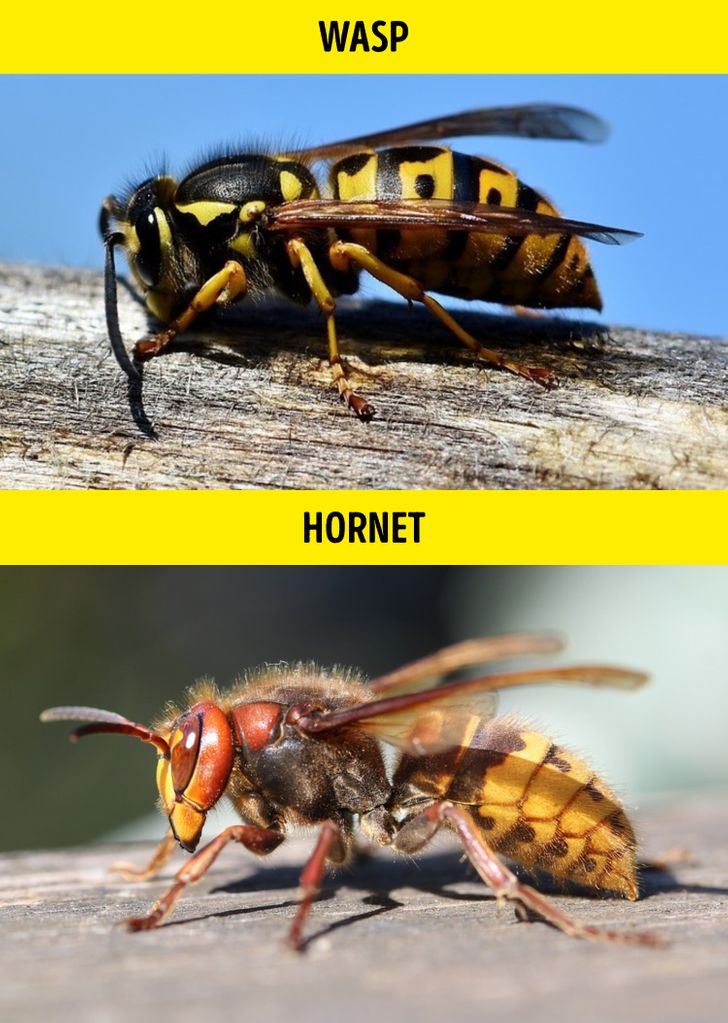
Both insects are menacing, that’s for sure. Hornets are larger and boast orange and black coloring, resembling spots rather than stripes, while wasps are more brightly colored and have yellow and black rings. You’re better off avoiding both.
4. Seal vs sea lion

You’ve most likely met seals as cute plushy animals and sea lions as circus acrobats. Seals are covered with fur and have tiny front flippers which prevent them from walking, forcing them to wiggle on their bellies. Sea lions have smooth skin and vast flippers that they use to move on the ground.
5. Turtle vs tortoise
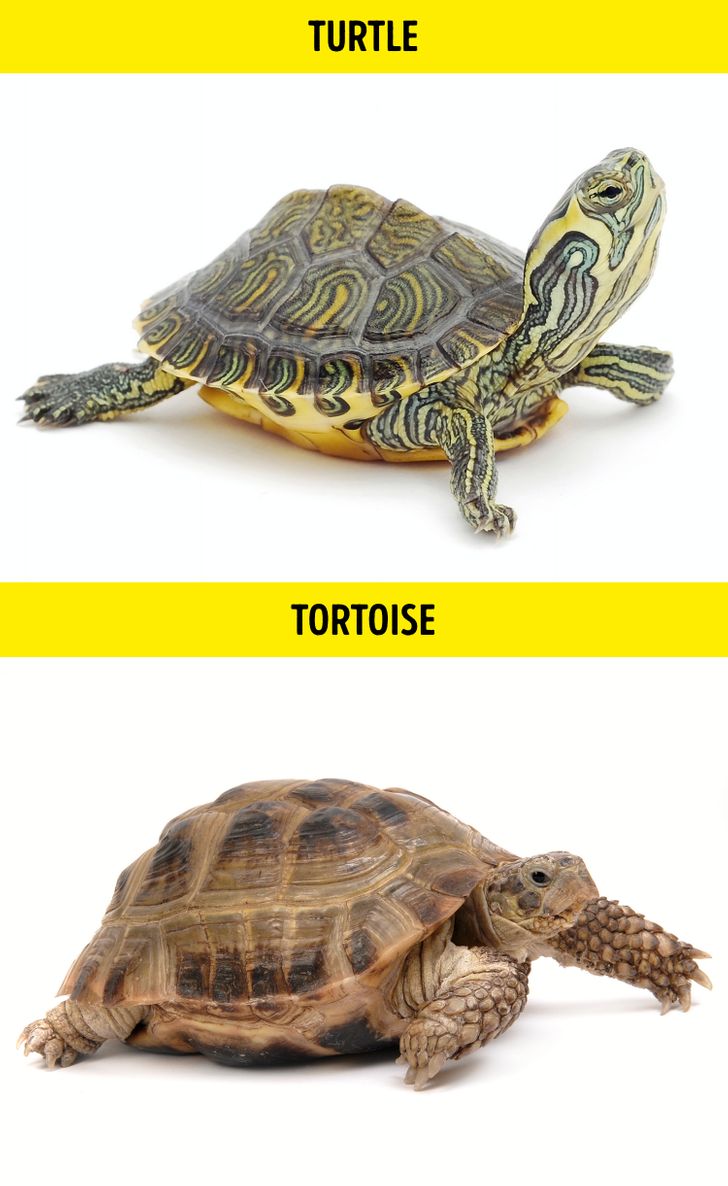
These 2 are both mobile (but very slow at that) and boast 4 legs. But the “turtle rock” is aquatic and has markings that resemble stains and circles on the water to better hide in the ponds. The “tortoise rock” is a land animal and spends most of its time on the ground — that is, as a literal rock.
6. Raven vs crow vs rook vs jackdaw

Most corvids look fairly similar (excluding jays who are like a theatre kid in a goth family). Ravens are the loftiest and most fashionable thanks to their “beard” of throat feathers. Crows and rooks are of the same size, but rooks have a distinct grey beak and fancy feather “pants” on their legs. Jackdaws are the goofiest-looking thanks to their very short beaks and a round heads with black caps.
7. Donkey vs mule
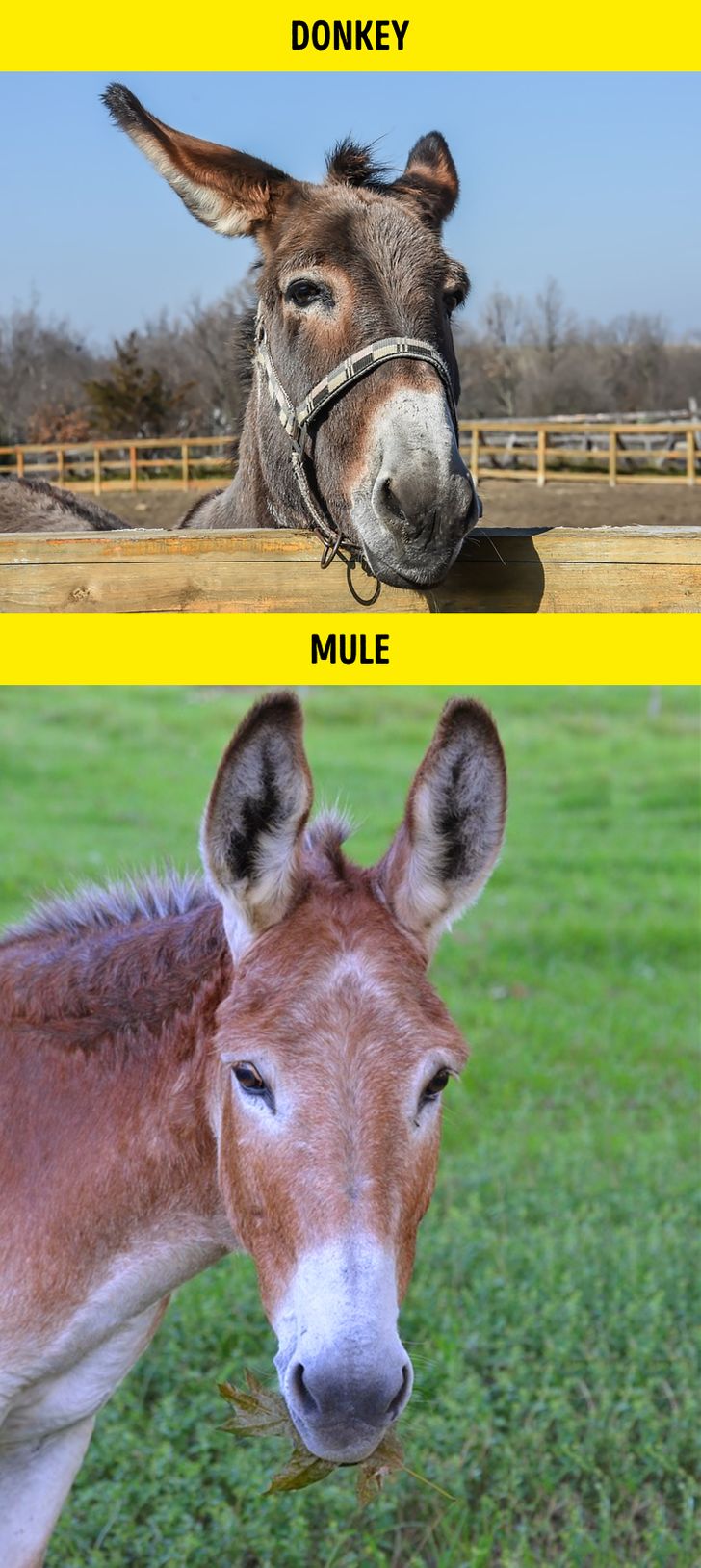
This one is tricky for a simple reason: while the donkey is its own species, a mule is a hybrid of donkey and horse. Funnily enough, it looks exactly like what you’d think these 2 animals would look like: an elegant head of a horse with ridiculously oversized donkey ears.
8. Hare vs rabbit
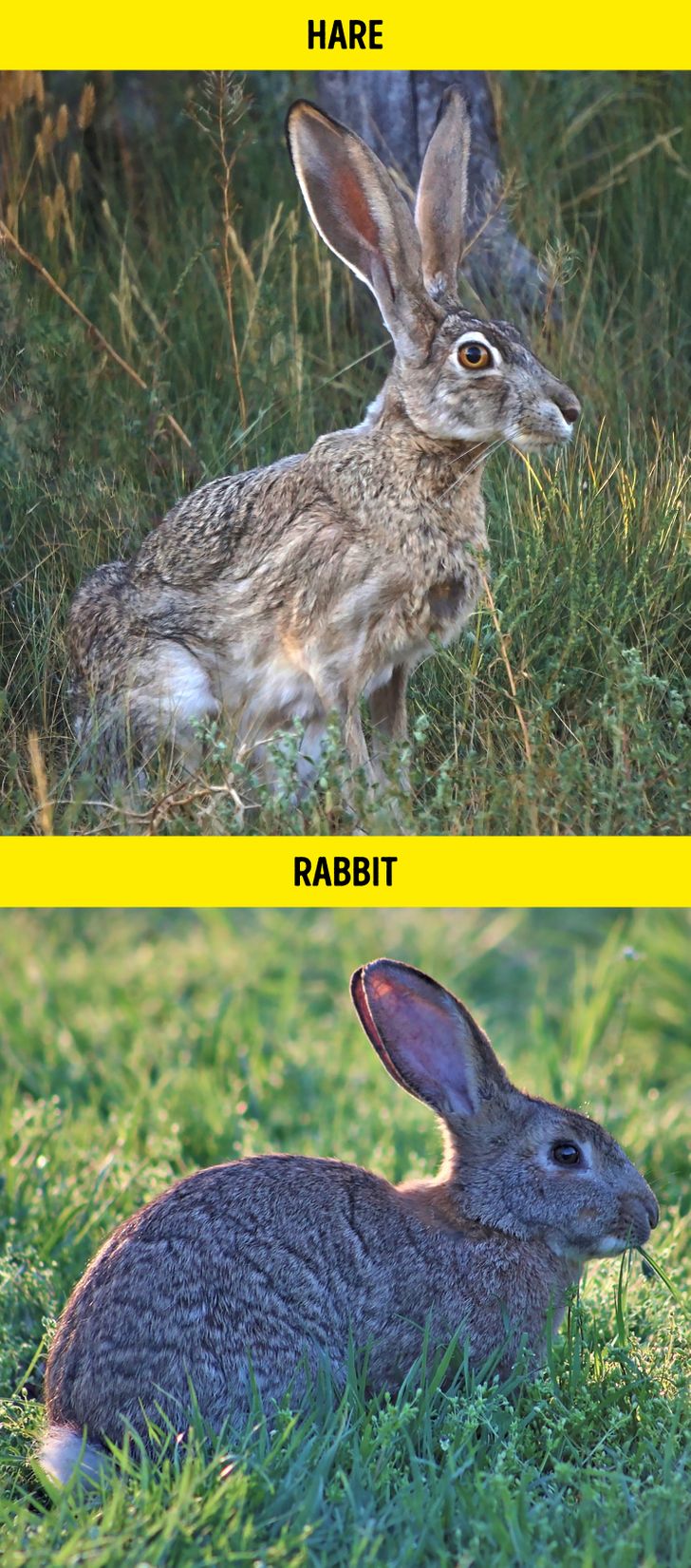
If you want a cuddly little pet, a rabbit is your best bet, but a hare definitely is not. Hares are larger and faster and have longer legs and ears. Rabbits are smaller, fluffier, and overall “cuter.” They even eat different food: rabbits prefer vegetables (like carrots) and soft grass while hares prefer bark and twigs. Rabbits are social animals while hares tend to be solitary. It’s no wonder rabbits are easily domesticated while hares mostly stay feral.
9. Moth vs butterfly
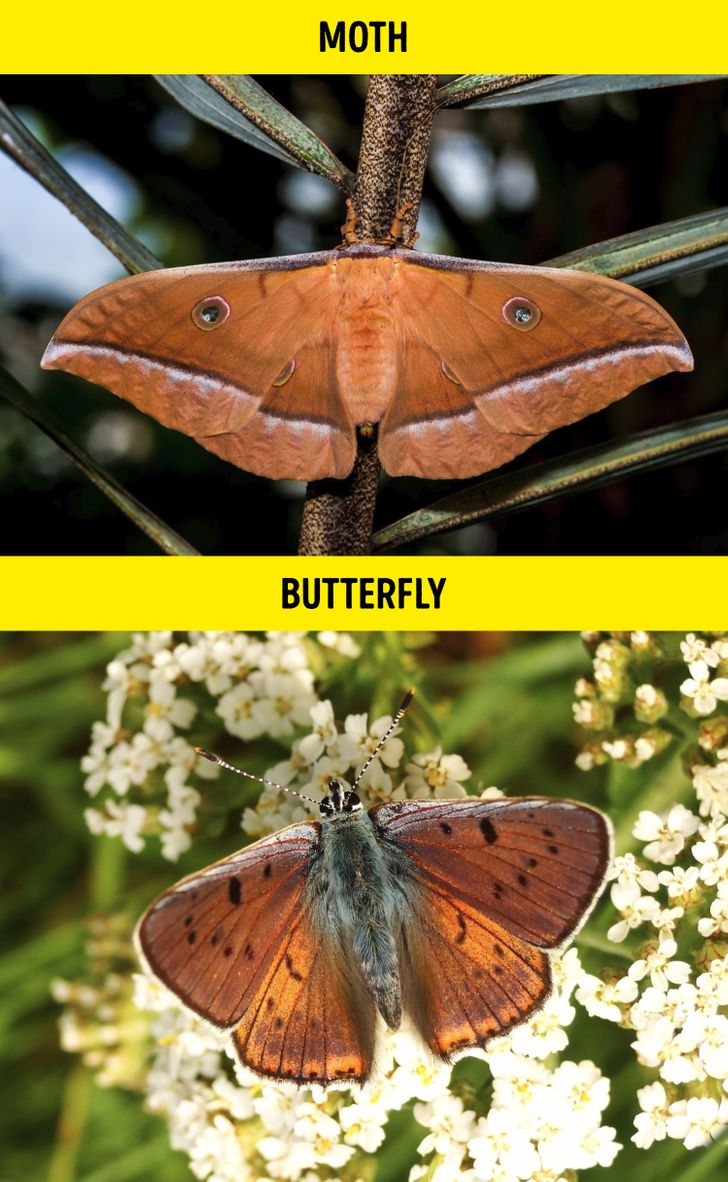
Moths have tent-like wings while butterflies flap their wings vertically. Moths usually rest with their wings open, while butterflies rest with their wings closed. Their antennas also differ: butterflies’ are long and thin and moths’ are short and feathery. Butterflies are strictly diurnal, while moths are mostly nocturnal.
10. Dolphin vs porpoise
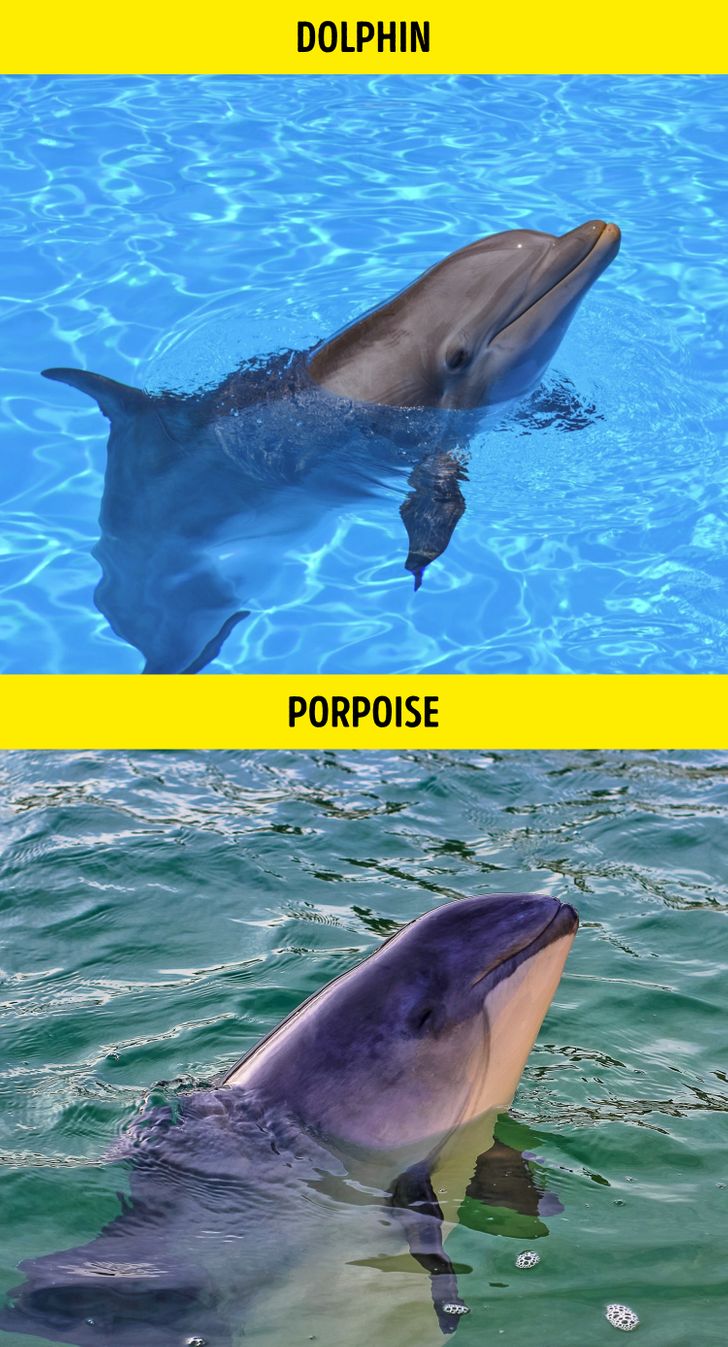
The difference between dolphins and porpoises comes down to their snouts, fins, and figures. Dolphins have long “beaks,” slender bodies, and curved dorsal fins. Porpoises have more flat, sloping faces, smaller flippers, and shorter triangular dorsal fins.
11. Weasel vs stoat
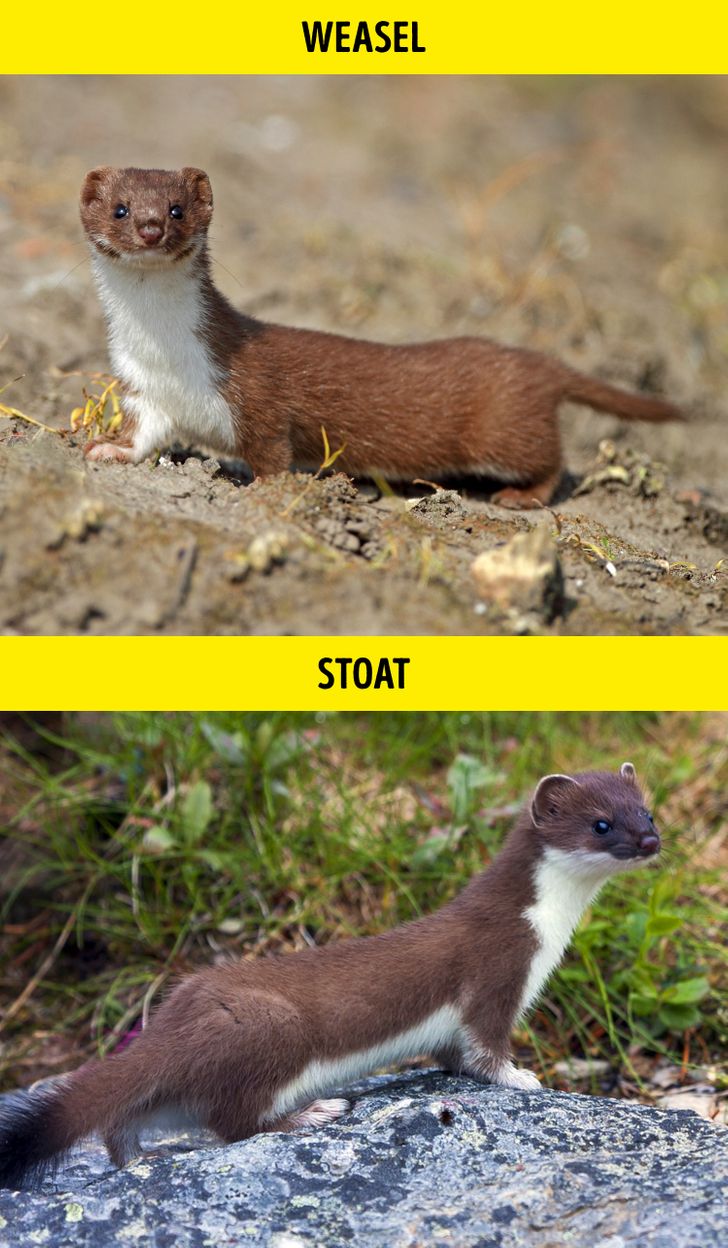
These 2 animals are close relatives. Stoats are bigger and have long tails with fuzzy black tips, while weasels’ tails are short and of the same color as the rest of the body. Stoats move in a bouncing gait with an arched back which looks hilarious, and weasels keep closer to the ground. Stoats also turn white in winter.
12. Eagle vs hawk vs falcon
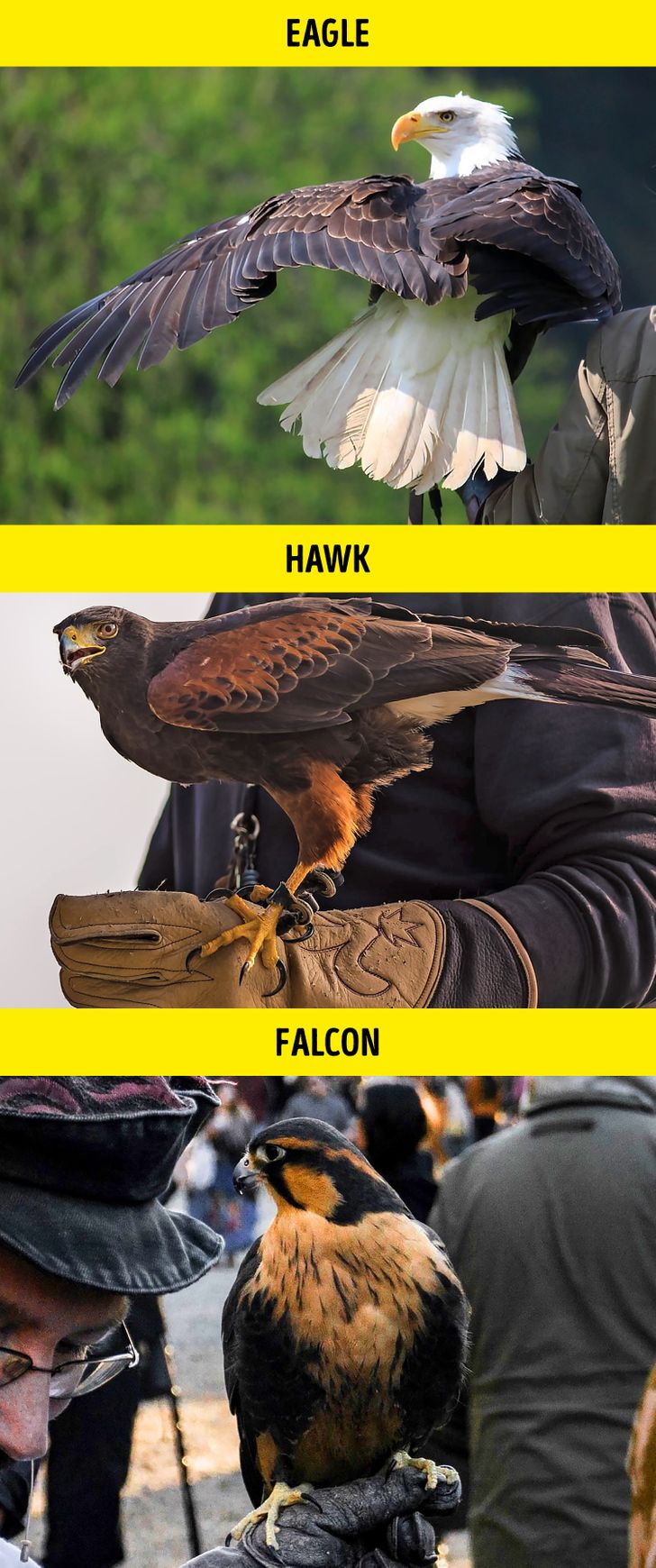
Eagles are gigantic, powerful birds who prefer to live in open spaces like cliffs and mountains. Hawks are a little smaller and more nimble in the air, capable of maneuvering in more closed areas. Falcons are the smallest and fastest of the 3 and differentiate the most visually: they have larger eyes and shorter beaks.
13. Mouse vs rat
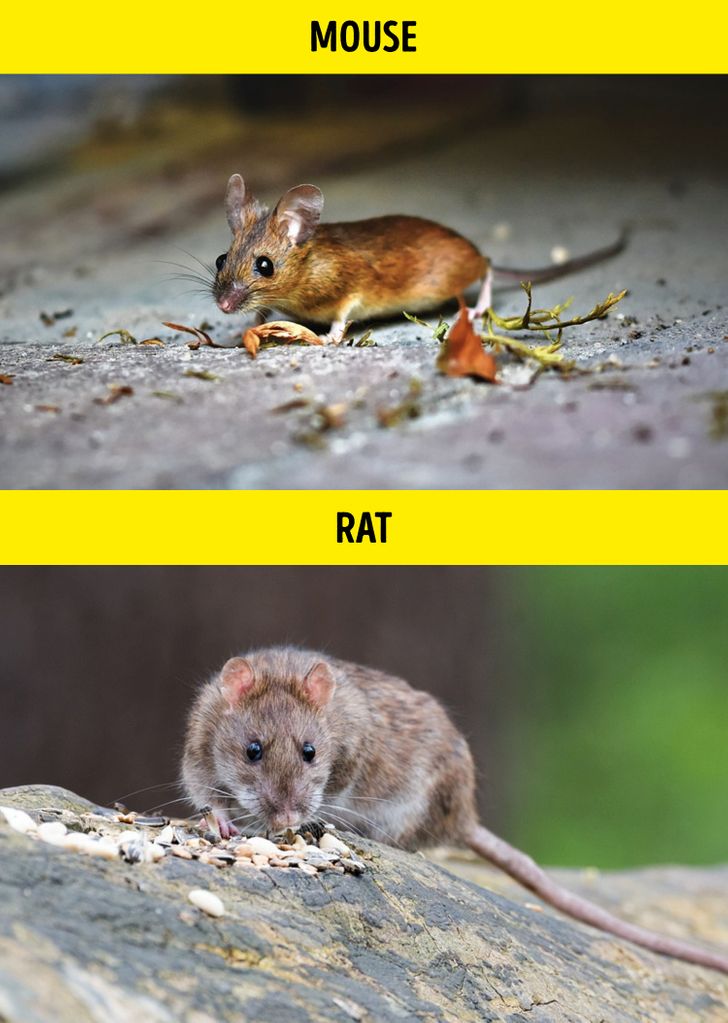
The 2 most famous (or infamous) rodents can be easily distinguished by 3 things: their size, tail, and ears. Mice are diminutive, even compared to young rats; they have thin long tails covered with fur while rats’ tails are thick and hairless. Mice have ears that are bigger in proportion to their bodies and are round and floppy with a tiny, triangular face. Rats’ faces are more prominent and blunt.
14. Seagull vs albatross
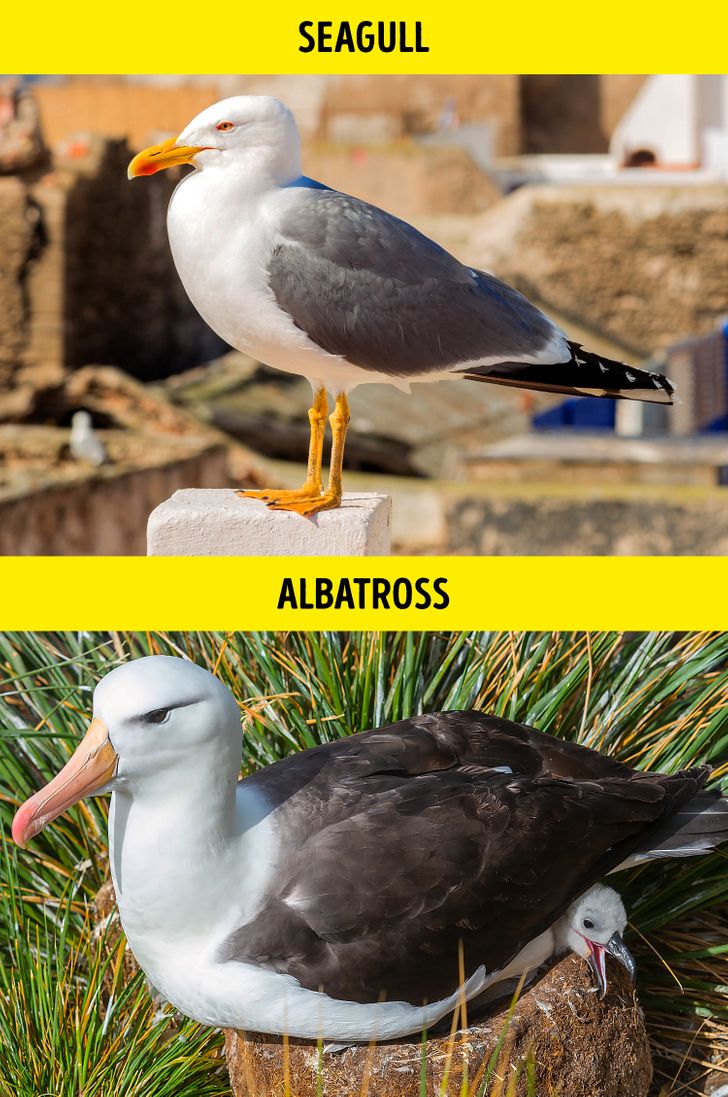
Gulls often live near water, be it the sea or ponds, and are rather acrobatic while diving and fish-catching, but aren’t fans of long voyages, unlike albatrosses. Albatrosses are portly birds who live in constant flight over the sea. They even have unique nostrils that allow them to remove salt from water and food.
15. Wolverine vs honey badger

Despite living in different climate zones — the honey badger that lives in Africa and the wolverine that resides in the northern forests — both belong to the Mustelidae family. Wolverines are taller with longer legs and noticeable ears and have brown fur with yellow rings. Honey badgers keep closer to the ground and have black bodies with a white “cape” on their backs.
16. Wolf vs coyote vs jackal
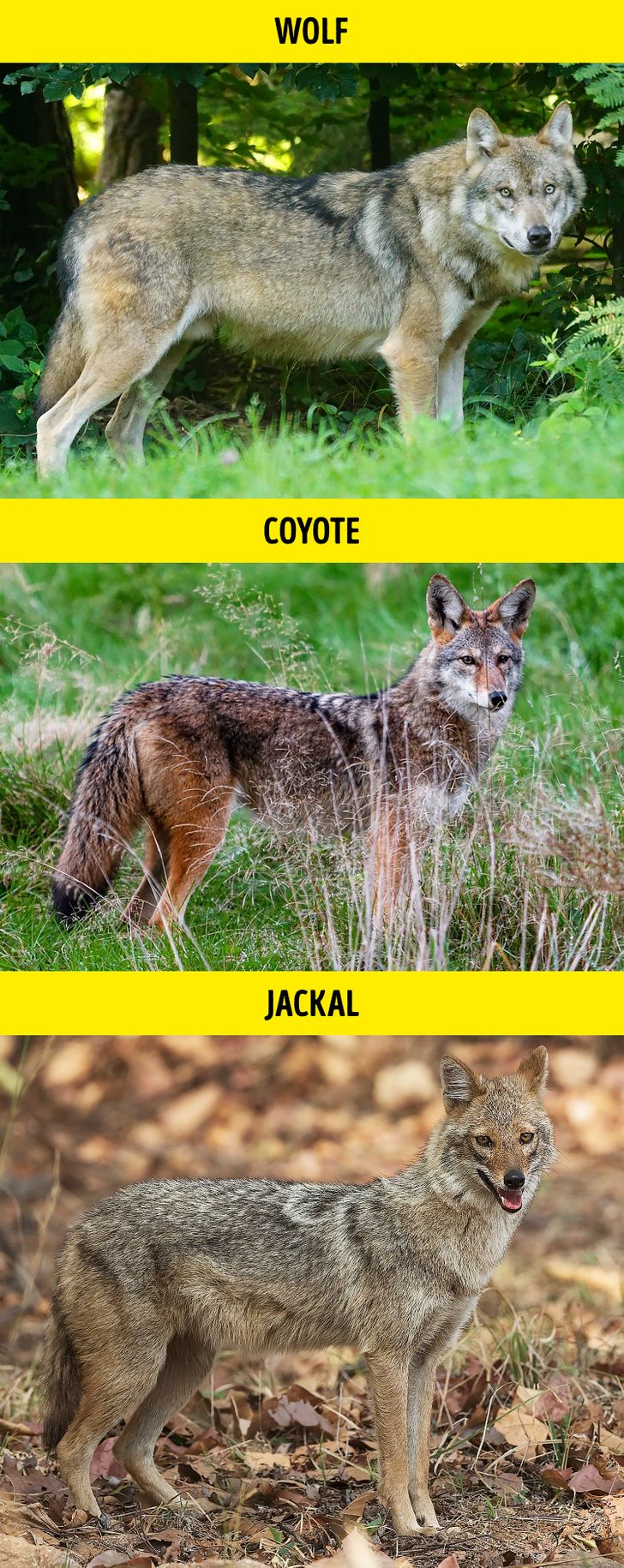
These 3 are “good boys and girls” that parade all over the globe. Jackals live in Africa, Asia, and India; coyotes live in Northern America; and wolves live all over the place. Wolves are large, sturdy animals, while coyotes and jackals possess a more lean and fragile frame.
Coyotes are recognizable for the red fur on their faces and ears while jackals have a more yellow-colored coat. Additionally, jackals are noticeably less fluffy because they don’t have to endure the harshness of winter.
Funny bonus: Wolverine vs the honey badger
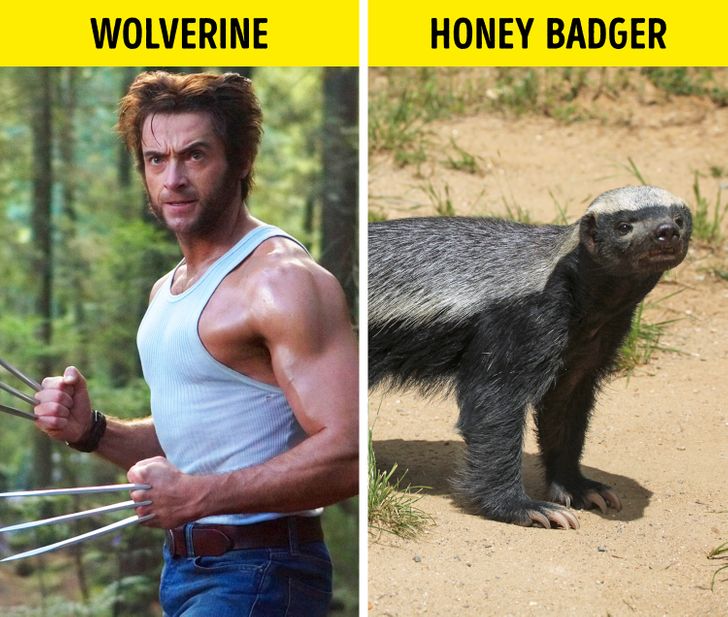
What kinds of animals have ever confused you? If you know more examples, share them in the comments!
Preview photo credit shutterstock.com, shutterstock.com
Legendary Actor Dustin Hoffman’s Secret Battle with Cancer and Triumphant Journey to Recovery

The gifted actor Dustin Hoffman, well known for his part in Rain Man, battled and overcame cancer in a low-key manner in 2013. Even after winning, he made the decision to keep his recovery from illness a secret, hardly ever sharing it with anyone. Following a successful course of cancer treatment, Hoffman was “feeling great and in good health,” according to his publicist, Jodi Gottlieb. Through early detection and surgery, the cancer was completely healed.

Hoffman initially gained notoriety in 1967 for his breakthrough performance in the romantic comedy The Graduate, for which he was nominated for his first Academy Award. He made a lasting impression on the film industry and rose to fame at the age of thirty. Hoffman gave outstanding performances in films such as the moving drama Kramer vs. Kramer (1979) and the 1976 film All the President’s Men.
Hoffman portrayed a guy in Tootsie who passed for a woman in order to land a part in a soap opera, making it one of his most iconic roles. Hoffman said that the event had a significant influence on his view of women.
Hoffman was shocked to learn that he wasn’t considered conventionally attractive as a woman. He came to see how women’s appearance was unduly constrained by society expectations. This insight permanently altered his behavior toward women, both in real life and on screen.

Even though Tootsie was a huge hit, Hoffman saw beyond its comedic merits. Soaring to become the second highest-grossing movie of the year, the picture delved into more significant subjects and struck a strong chord with viewers.
Hoffman won his first Oscar for Kramer vs. Kramer in 1988 before taking home his second Oscar for his outstanding performance in Rain Man. Six Golden Globe Awards and one Primetime Emmy were given to him in recognition of his talent. Hoffman was in great demand in the market and his career was booming.
But in 2013, he abruptly disappeared from the spotlight, leaving his followers to wonder where he had gone. They had no idea that Hoffman was secretly fighting cancer.
The reason for his seclusion wasn’t made public until a few months after he directed the British comedy Quartet in 2012 and finished filming Chef in 2014, in which he co-starred with Jon Favreau and Sofia Vergara. Hoffman had received cancer treatment, but his representative revealed that he had opted to keep the information private. Hoffman was in good condition and had completely recovered from the illness, Jodi Gottlieb informed the public.
Hoffman suffered from health issues, yet he never let that stop him. He has starred in many films since receiving the cancer diagnosis, such as Sam and Kate in 2022 and the impending science fiction drama Metropolopolis in 2024. Furthermore, from 2008 and 2024, he provided the voice of the adored Master Shifu in two additional Kung Fu Panda franchise films.
Hoffman and his spouse were recently sighted walking through the streets of London, as content and in love as ever. The 86-year-old Hollywood icon looked young and carefree while he engaged with cameras and browsed boutiques with his 43-year-old wife.

The path taken by Dustin Hoffman is evidence of his tenacity and unwavering love for what he does. Many people find inspiration in his fight against illness, which serves as a reminder that despite obstacles, it is still possible to triumph and go after our goals.

Kindly SHARE this article on Facebook with your loved ones to raise awareness of Dustin Hoffman’s incredible story.
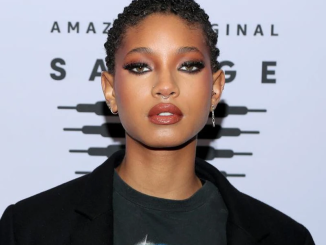


Leave a Reply